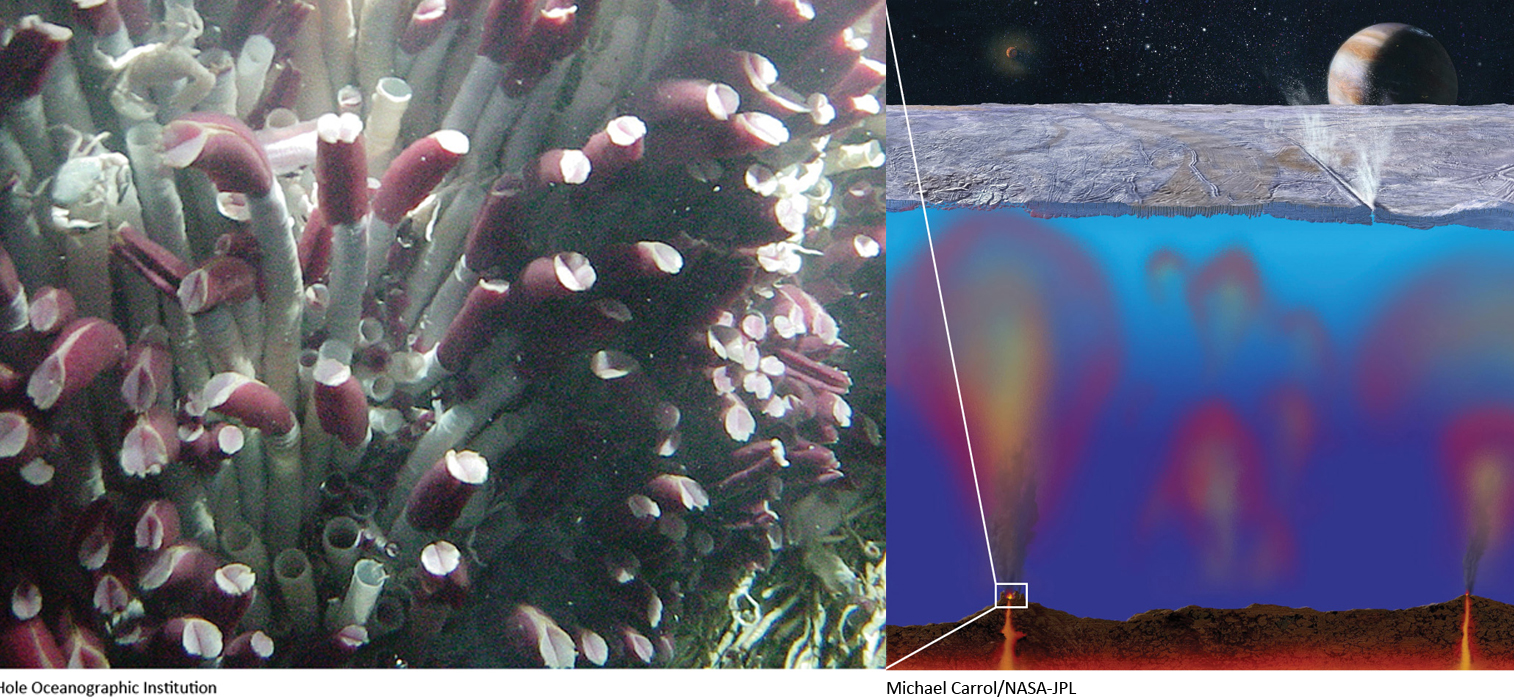189

Looking for Life Beyond Earth
CHAPTER LEARNING OBJECTIVES
By reading the sections of this chapter, you will learn:
- 8-1 Planets and the chemical building blocks of life are found throughout space
- 8-2 Europa and Mars have the potential for life to have evolved
- 8-3 Meteorites from Mars have been scrutinized for life-forms
- 8-4 The Drake equation helps scientists estimate how many civilizations may inhabit our Galaxy
- 8-5 Searches with space-based infrared telescopes and Earth-based radio telescopes for Earthlike planets and alien civilizations are under way
190
One of the most compelling questions in science is also one of the simplest: Are we alone? That is, does life exist beyond Earth? As yet, we have no definitive answer to this question. None of our spacecraft has found life elsewhere in the solar system, and radio telescopes have yet to detect signals of intelligent origin coming from space. Reports of aliens visiting our planet and abducting humans make for compelling science fiction, but none of these reports has ever been verified.
Yet there are strong reasons to suspect that life might indeed exist beyond Earth. For one, we discussed in previous chapters that in just the past few decades, the number of planets known to exist has increased from fewer than 10 to several thousand. This fact makes astronomers consider that there are thousands, if not millions, of more locations where life could possibly reside than previously thought. For another, in the last two chapters we described moons that have liquid oceans heated from below, explosive geysers and volcanoes, and even dynamic weather systems. Life systems need energy and these observations provide evidence that many locations have energy available to support life. We are now ready to consider a third compelling reason to imagine life exists beyond Earth: Earth is home to living and flourishing organisms in some of the most “unearthly” environments on our planet. At the bottom of Earth’s oceans, thermal vents feed superheated water into the ocean that serves as the food energy sources for colonies of pink, eyeless, alien-looking worms the size of your thumb. If life can flourish at the bottom of the ocean, might it not also flourish in the equally hostile conditions found on other worlds?
In this chapter, we consider first the basic elements necessary to support life. We look for places in our solar system where life may once have originated, and where it may quietly still exist today. We will see how scientists estimate the chances of finding life beyond our solar system, and how they search for signals from other intelligent species. Then, we will learn how a new generation of telescopes may make it possible to detect the presence of even single-celled organisms on worlds many light-years away.